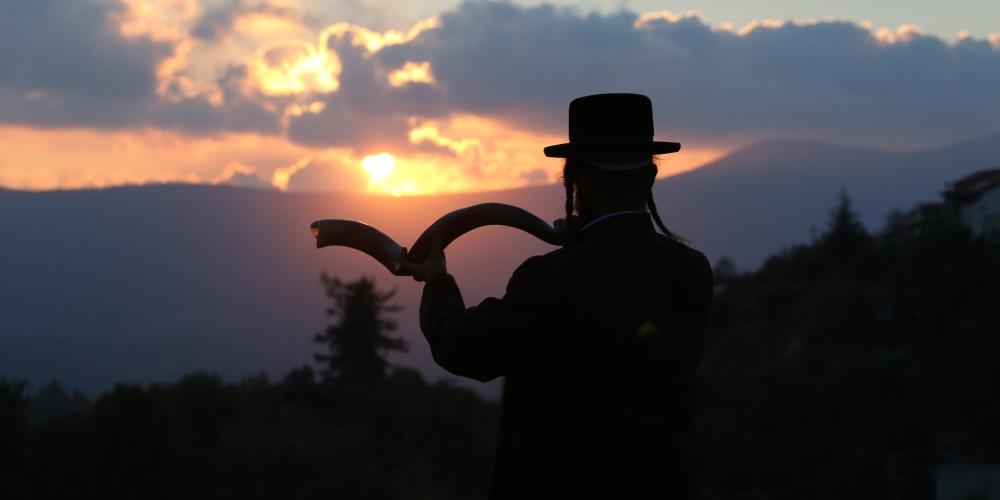
In our last post, we began our discussion as to why in so many disparate cases, one might have thought that kohanim are exempt from a mitzvah and hence, must be specifically obligated in that mitzvah.
“All are obligated in shofar: kohanim, levi’im and yisraelim” (Erachin 3b). It is hard to imagine that kohanim might be exempt from the mitzvah of shofar. However, when one considers that the shofar is blown each and every day in the Temple, it is not unreasonable to assume that there is no great need to specifically hear the shofar on Rosh Hashanah.
Such an assumption would be wrong. The sounds of those shofarot may be similar, but the impact is very different. One can do the same mitzvah day in and day out, yet that mitzvah can take on special meaning and resonate much more at certain times and occasions. Rosh Hashanah marks the time we coronate G-d as the King of Kings, and while we recognize such all year, the day of coronation is special. The shofar is much more powerful on the first of Tishrei than on the first of Cheshvan, even if such a difference would not show up on a decibel counter.
So important is it for the kohanim to hear the shofar on Rosh Hashanah, that the Mishna rules that when Rosh Hashanah falls on Shabbat, the shofar is blown in the Temple, the “home” of the kohanim—but not throughout the country (Rosh Hashanah 29b).
The Mishna specifically mentions that kohanim are obligated to hear the Megillah read not because one would think that kohanim are exempt, but to emphasize the importance of hearing the Megillah. “The priests at their service, the Levites on their platform and the Israelites at their watches, all cancel their service and come to hear the reading of the Megillah” (Erachin 4a).
With the last of korbanot brought by mid-afternoon, there would appear to be little reason why the Temple service couldn’t continue as usual, followed by an afternoon minyan for Megillah reading. Yet so important is the communal coming together to hear the Megillah—to publicize the miracle—that they “closed” the Temple so all could join first thing in the morning.
Jewish tradition states that one is supposed to make (at least) 100 brachot a day. Yet only one of those is actually specified in the Torah: “And you shall eat, and be satiated and bless the Lord your G-d”. Nonetheless our Sages felt the need to specifically mention that kohanim, too, must say birchat hamazon. The Gemara explains that such clarification is needed when the kohanim are eating korbanot that serve as atonement, i.e., a sin offering brought by others. One might have argued that birchat hamazon is obligatory only when eating for enjoyment, “and you shall be satiated”. But an obligatory meal for the purpose of effecting atonement would not qualify. This argument is rejected because when all is said and done, the kohanim do enjoy the food. It matters little why one is eating; eating a nice meal obligates one in birchat hamazon. As our Sages saw it, atonement and enjoyment are not mutually exclusive; in fact, they complement each other. Yom Kippur, the Day of Atonement, is, according to our Sages, the happiest day of the year.
When people eat together they must join in a zimmun; one cannot compare the private thanking of G-d to the public thanking of G-d. And eating together means the ability to share with each other; it is sharing with others that demonstrates our love or, at the very least, our concern for others. One might have argued that a kohen eating sacrificial meat (or terumah) cannot join in a zimmun with non-kohanim. While such a kohen might be in the physical presence of others, he would technically be eating alone, unable to share his food. However, since the non-kohen can share his food with the kohen, they can in fact join together in a zimmun. Even a partial connection between Jews is worthy of public thanksgiving.
After discussing the obligation of the kohanim in so many mitzvot, the Gemara finally returns to the opening Mishna of the masechet, which teaches that “hakol ma’artichin venerachin, all can take vows of valuation and all can be subject to vows of valuation, kohanim, levi’im and yisraelim” (Erachin 2a).
The Torah uses similar language in describing the laws of erachin as it does in describing the machazeet hashekel. Thus, Ben Buchri argues, we must specifically obligate kohanim in the laws of erachin, lest one mistakenly claim that just as kohanim are exempt form the mitzvah of machazeet hashekel, so, too, they are exempt from erachin.
Presumably the reason kohanim are exempt from machazeet hashekel is twofold.
The machazeet hashekel’s original purpose was to serve as a method of taking a census of the Jewish people, a census from which shevet levi, i.e., the kohanim, were excluded. That census was a one-time event, yet the mitzvah to donate the half-shekel was a yearly obligation, serving as a mechanism with which to collect the funds needed to run the Temple. Just as one would not expect the rabbi to pay membership dues, we do not expect the kohanim to pay for the upkeep of the Temple. We need to give them funds to ensure its proper upkeep.
Ben Buchri goes a step further and argues that as they are exempt, it is best if they do not donate machazeet hashekel lest it appear that one is bringing chulin, unsanctified monies, to the courtyard of the Temple. Presumably this “unnecessary” half-shekel donation lacks sanctity and is inappropriate for the Temple. While he does not quite go that far, his negative attitude towards kohanim donating is reflected in his teaching that a kohen who “gives a half-shekel does not sin”. Despite the literary connection of erachin and machazeet hashekel, kohanim are obligated in the former and not the latter.
Rav Yochanan ben Zackai disagrees, and argues that a kohen “who does not give the half-shekel, sins”. Basing himself on the fact that the language of erachin also resembles that of crossing the sea, he argues that all who were saved at Yam Suf, i.e. all Jews, are obligated to contribute the half-shekel.
One might suggest that Ben Buchri and Rav Yochanan ben Zackai are debating the essence of the Jewish people. Rav Yochanan ben Zackai argues that it is the shared historical experience that unites us. Peoplehood is defined, to use Rav Soloveitchik’s terminology, by our shared covenant of fate and hence, all must contribute the machazeet hashekel.
Ben Bochri sees the essence of peoplehood as coming together to worship G-d. It is the covenant of faith that is our essence. And thus, those who serve our religious needs are to have distinct responsibilities and privileges and hence, are exempt from the machazeet hashekel.
The reason that we must specifically include kohanim in the obligation of erachin, according to Rav Yochanan ben Zackai, is lest we conflate it with pidyon haben, a second mitzvah that has language similar to that of erachin. That kohanim have no need for a pidyon haben is based on simple logic. Those who do the redeeming of the firstborn, i.e., the kohanim, need not be redeemed themselves. Only those who do not require redemption themselves can redeem others. It took a Moshe Rabbeinu growing up in the freedom and grandeur of the Egyptian palace to lead the people to freedom.
The mitzvot of pidyon haben and machazeet hashekel can be viewed as polar opposites. A pidyon haben celebrates the birth of a particular firstborn Jewish child who, in a public ceremony, is freed from the responsibility of serving the Jewish people. The machazeet hashekel, on the other hand, is given anonymously—its goal is to avoid the necessity to specifically count someone. The money is given not to free one from the priesthood, but to support those whose life is dedicated to public service. The Jewish people need both those who take an active public role and those who toil anonymously behind the scenes. Both are of great value.



